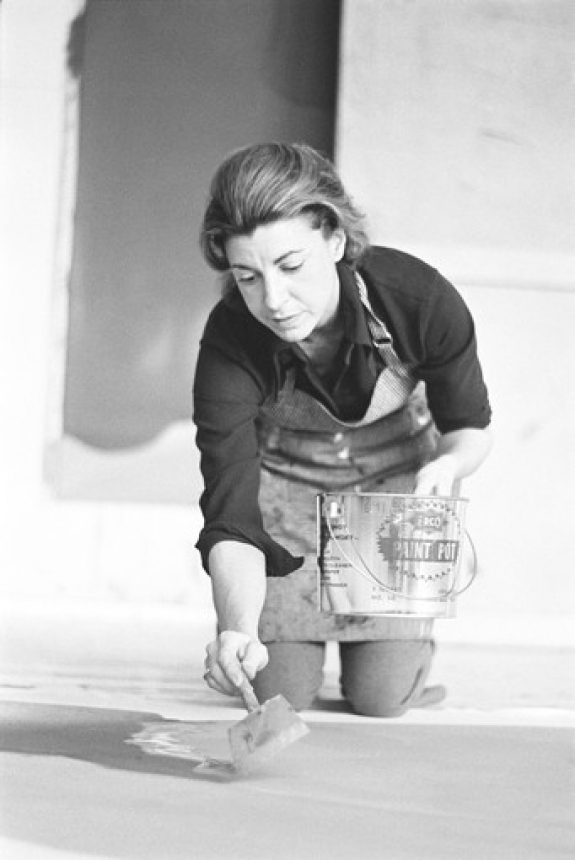Helen Frankenthaler, a New York artist whose bursts of color achieved by pouring thinned paint onto canvas from coffee cans helped point art in fresh directions after the initial post-World War II explosion of Abstract Expressionism, has died. She was 83.
Frankenthaler died Tuesday after a long, unspecified illness at her home in Darien, Conn., her family announced.
In 1952, the 23-year-old Frankenthaler hit upon her "soak stain" technique, achieving some of the vibrancy, lightness and pliancy of watercolor by thinning down acrylic paint and pouring it on a large, unprimed canvas spread on the floor of her Manhattan studio.
"Mountains and Sea," her breakthrough in pink, blue and green, set a style that critics — although not universally — have applauded for its lyricism and luminous use of color. Frankenthaler's stain technique influenced others such as Morris Louis, Jules Olitski and Kenneth Noland, giving rise to the Color Field movement of the 1950s and '60s.
Frankenthaler was born Dec. 12, 1928, and grew up amid prestige and comfort on New York's Park Avenue, the youngest of three daughters of Alfred Frankenthaler, a New York State Supreme Court justice, and his wife, Martha. Attending the progressive Dalton School, she was taught by the Mexican painter Rufino Tamayo. She set out to be a painter after graduating from Bennington College in Vermont in 1949.
Among those taking note was critic Clement Greenberg, a leading advocate of Abstract Expressionism, with whom Frankenthaler was romantically involved until the mid-1950s. Through him, she met the New York School of painters, including Jackson Pollock, whose drip-painting technique of laying a canvas on the floor and aggressively raining paint upon it would help inspire her own far more judicious and deliberate way of painting by pouring.
In 1958 Frankenthaler married Robert Motherwell, a leading light from the first generation of New York Abstract Expressionists. They were divorced after 13 years. In 1994 she married investment banker Stephen M. DuBrul Jr.
An early prominent forum was her mid-1960s inclusion in "Post-Painterly Abstraction," a touring survey curated by Greenberg that also featured Noland, Sam Francis, Willem de Kooning and Ellsworth Kelly.
Reviewing Frankenthaler's 1967 solo show at one of L.A.'s top venues, the Nicholas Wilder Gallery, Times critic William Wilson hailed her work as "a primary wellspring in the development of stained color painting.... There is nothing easy about her large canvases.... Their jarringly factual color and sensitively considered edges finally resolve in works of awesome integrity." Major retrospectives ensued at the Whitney Museum of American Art in 1969 and the Museum of Modern Art in 1989.
Opinions have varied, however. Current Times art critic Christopher Knight has described Frankenthaler as a "minor, formalist artist," and her influential "Mountains and Sea" as a "slight innovation."



